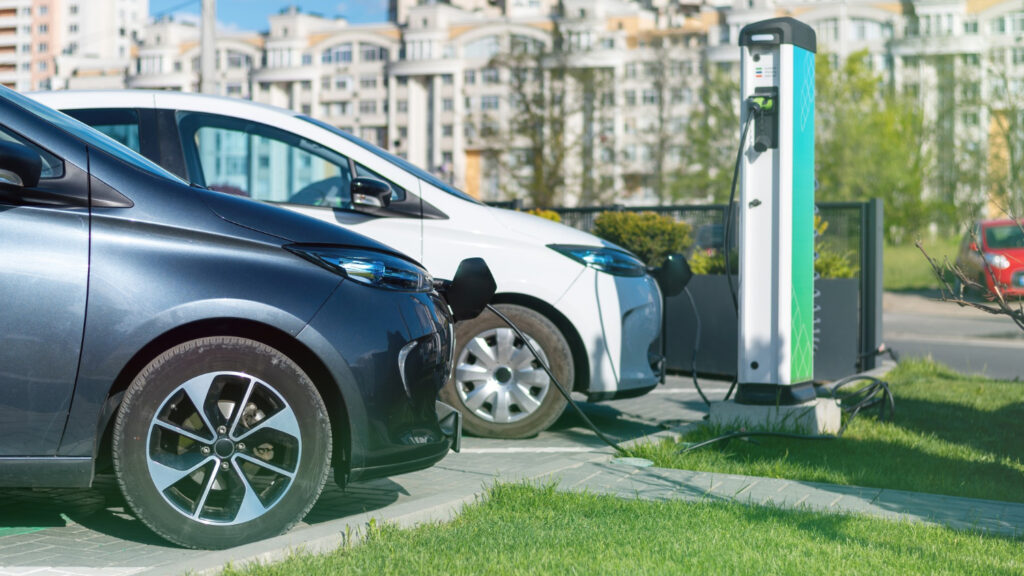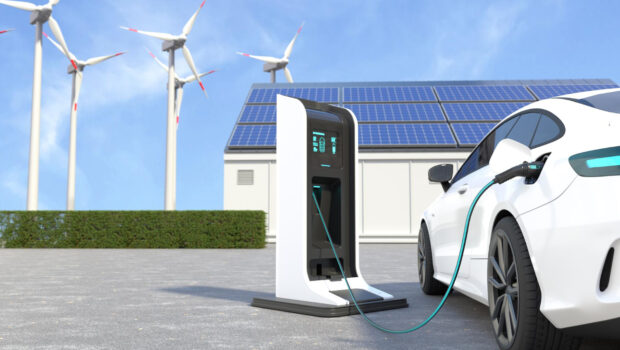Powering the Future: EV Charging Stations
Electric vehicles (EVs) are becoming increasingly popular as a cleaner and more sustainable mode of transportation. However, the widespread adoption of EVs is dependent on the availability of charging infrastructure. This is where EV charging stations come into play, as they provide a means for EV drivers to recharge their vehicles quickly and conveniently.
The installation of EV charging stations has become a crucial component in building a sustainable future. With climate change being one of the most pressing issues of our time, reducing carbon emissions from transportation is essential. The use of electric vehicles powered by clean energy sources can significantly contribute to achieving this goal. Therefore, understanding the importance and types of EV charging stations and how to make them more accessible and convenient is critical for accelerating the transition towards a low-carbon economy.
The Importance of EV Charging Stations for a Sustainable Future
The proliferation of electric vehicles necessitates the widespread adoption and installation of EV charging stations to support a sustainable future. While EVs have become increasingly popular as more people recognize their environmental benefits, without adequate infrastructure, they may not be able to fully replace traditional gas-powered cars. This is where EV charging stations come in. They provide drivers with a convenient, accessible way to recharge their vehicle’s batteries on the go, making it easier for them to make the switch from gasoline-powered cars.
To encourage the adoption of EVs and the development of charging station networks, many governments around the world offer incentives such as tax credits or rebates for purchasing an EV or installing an EV charging station. These incentives help reduce the upfront costs associated with these technologies and promote their wider use. Additionally, advancements in battery technology are also driving growth in the industry by increasing range and reducing recharging times. As these technologies continue to improve and become more affordable, we can expect even greater adoption of electric vehicles and a further expansion of charging station networks to support them.
Types of EV Charging Stations
One can liken the various types of charging stations for electric vehicles to a toolbox, each with its own unique set of tools designed to suit specific needs and preferences. There are two main categories of EV charging stations: residential and public. Residential chargers are typically used at home or in private spaces, while public chargers can be found in various locations such as parking lots, highway rest areas, and commercial buildings.
Aside from the location, EV charging stations also vary based on their speed. Fast chargers provide a significant amount of power in a short period of time, allowing drivers to add significant range in just minutes. In contrast, slow chargers deliver power more gradually over several hours. Both types have their own advantages; fast chargers are ideal for those who need to quickly recharge during long trips or busy schedules while slow chargers may be more practical for overnight charging at home or work.
The Future of EV Charging Infrastructure
EV charging infrastructure is poised to undergo significant advancements in the coming years, as technological innovations and policy initiatives continue to drive the development of more efficient, accessible, and sustainable methods of powering electric vehicles. One area where significant progress is expected is smart charging technology. Smart charging enables EVs to communicate with the grid, allowing for more precise control over when and how they are charged. This can help reduce peak demand on the grid and lower electricity costs for both EV owners and utilities. In addition, smart charging can also enable vehicle-to-grid (V2G) capabilities, which allow EVs to provide energy back to the grid during times of high demand.

Cover Image by Freepik
Future innovations in EV charging infrastructure are also likely to include advancements in wireless charging technology. Currently, most EVs require a physical connection between the car and charger through a cord or cable. However, wireless charging uses magnetic resonance or other technologies that allow for contactless power transfer between an embedded pad on the ground and a receiver on the underside of an EV. This eliminates the need for cords or cables altogether and allows for more convenient charging options in public spaces like parking lots or garages. While currently less common than traditional plug-in chargers, wireless chargers are expected to become increasingly prevalent as their efficiency improves and costs decrease over time.
Making EV Charging More Accessible and Convenient
Electric vehicle charging infrastructure is the backbone of sustainable transportation, and as such, it is imperative that it be made as accessible and convenient as possible for all users. One way to achieve this goal is through the use of smart charging technology. Smart charging allows for better management of electricity demand by adjusting charging times based on grid capacity and energy pricing. This technology can also integrate renewable energy sources into the grid, making the entire process more sustainable.
Another approach to increasing accessibility and convenience in EV charging is through mobile charging solutions. These solutions would allow drivers to charge their vehicles wherever they are, without needing a stationary charger. Mobile chargers can be deployed at public events or used for emergency situations when a driver’s battery level drops too low. Additionally, mobile chargers could be used in areas where there isn’t yet sufficient fixed infrastructure or where future demand is uncertain. By implementing both smart charging technology and mobile solutions, we can make electric vehicle ownership more practical and feasible for everyone, regardless of location or lifestyle.
Frequently Asked Questions
What is the cost of installing an EV charging station at home?
The cost of installing an EV charging station at home depends on several factors, such as the type of charger, the electrical system’s condition, and installation process. A comprehensive cost analysis is necessary to determine the total expenses involved in setting up a home charging station.
How long does it take to charge an EV at a public charging station?
At a public charging station, the charging speed of an EV depends on the infrastructure requirements and can vary between 30 minutes to several hours. For example, Tesla’s Supercharger network has a maximum output of 250 kW, which can charge a Model S in around 40 minutes.
Are there any environmental concerns related to the production and disposal of EV batteries?
The production and disposal of EV batteries raise environmental concerns. Recycling methods are being developed to reduce waste, but potential health risks from the toxic materials used in battery manufacturing remain a challenge.
How does the availability of EV charging stations vary across different regions and countries?
The availability of EV charging stations varies across regions and countries based on government incentives and private investment. Factors such as population density, electric vehicle adoption rates, and infrastructure development contribute to differences in access to charging infrastructure.
Can EV charging stations be powered by renewable energy sources?
Renewable energy integration into charging station infrastructure is possible and desirable. Solar, wind, and geothermal sources can be used to power EV charging stations, reducing greenhouse gas emissions and promoting sustainable transportation.
Conclusion
In conclusion, the future of transportation lies in sustainable and eco-friendly practices. EV charging stations play a critical role in creating a world that is powered by clean energy sources. As electric vehicles continue to gain popularity, it is essential for governments and private entities to invest in building a robust charging infrastructure that is accessible and convenient for all.
To ensure a brighter future for our planet, we must collectively work towards reducing our carbon footprint. Installing more EV charging stations will not only help us achieve this goal but also bring us closer to achieving energy independence. Therefore, let us embrace the power of technology and strive towards creating a greener tomorrow – one where EVs reign supreme and fossil fuels are no longer the dominant source of transportation fuel.
Cover Image by Freepik
















